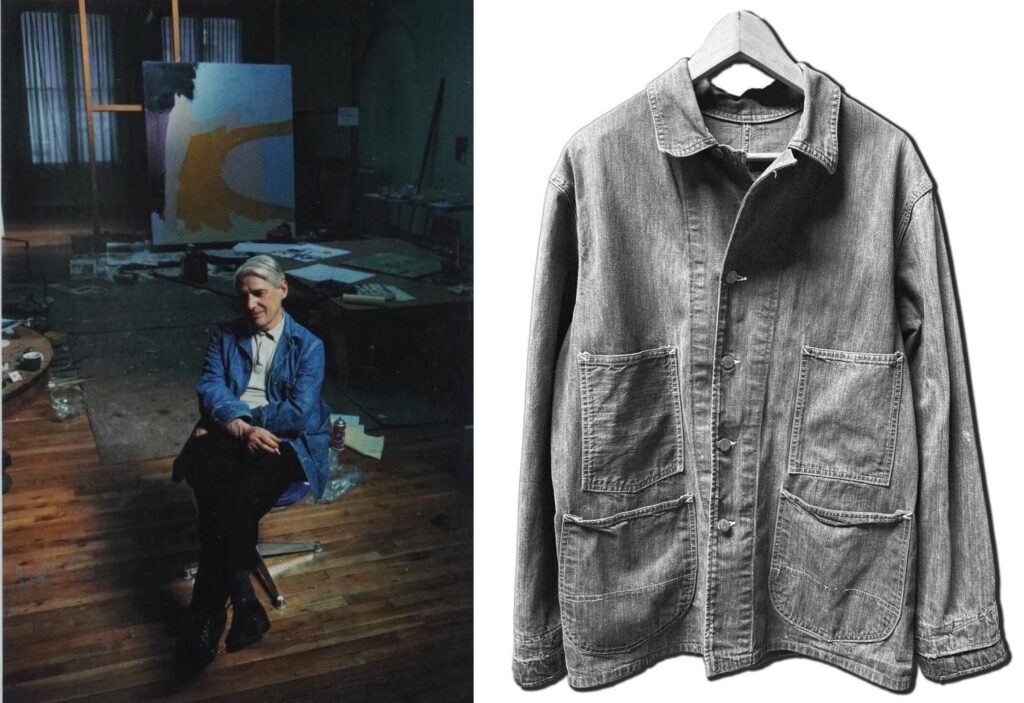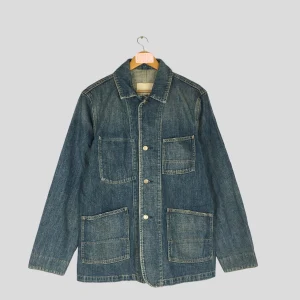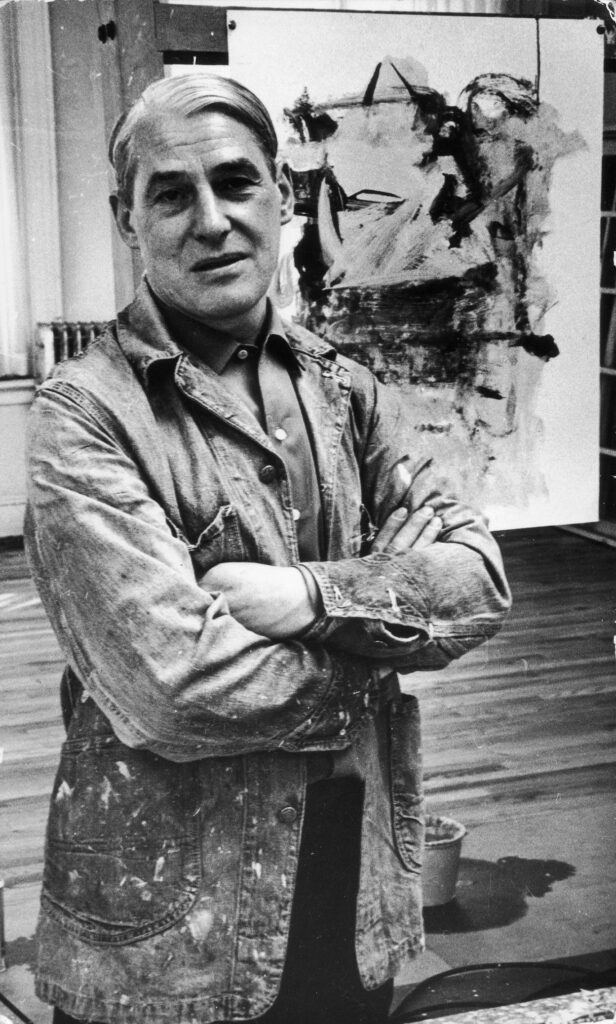
Artist and philosophy professor Megan Craig has written a beautiful and transparent essay about the difficulties and rewards of a life of painting. More particularly, it’s about the difficulties of a life of art when not painting. It’s wrapped in her story of an artist friend giving her an old denim work coat that originally belonged to Willem de Kooning:
I drape the jacket on a chair, then move it to a hook. Everywhere I put it seems wrong. I realize Jay might like a photograph of the garment in its new home, so I study the picture in The New York Times Magazine article, slide out a big canvas I painted many years ago, and lean it against my painting racks, as though it is a work in progress. I moe the chair in front of it and put on the jacket, which is huge on me, half expecting to be struck dead or find my face melting off like in that fateful scene in Raiders of the Lost Ark when they finally pry open the Ark of the Covenant. My back to the camera, I snap a photo as similar as possible to the one of de Kooning from 1962 and text it to Jay. He likes it; I can picture him smiling. But I cannot leave the jacket on for too long. I am unable to even put my hands in the pockets, paralyzed by the thought of de Kooning’s hands having been there. I place it back on the chair.
As someone engrossed with art who does not paint, I am in awe of Craig’s ambivalence, but I also did feel like I wanted to find that jacket. And since greg.org hero Brian Sholis sent Craig’s essay yesterday, it has been a whipsaw journey.

The lack of a label was no problem, because Craig mentioned metal buttons embossed with SMITH’S. And that can only be Smith’s American, a classic workwear brand in Brooklyn. There’s not one at the moment, but a circa 1990s jacket fairly similar to hers was on etsy recently. [Craig’s jacket left de Kooning’s back in 1974.]
For whatever reason, probably related to licensing, the digitized NYT Mag article Craig cited does not contain the image she discussed, where de Kooning was working on a painting ultimately untitled, but also known as Summer in Springs. That photoshoot by Dan Budnik took place in de Kooning’s SoHo studio at 831 Broadway in May 1962. Another image, above, is called Willem de Kooning Resting in the Kemper’s collection. He’s wearing the same jacket—but a different shirt—in Willem de Kooning ‘action’ painting. It might be the same t-shirt as this print, which has dramatic the parenthetical title, [the day Franz Kline died], which would be May 13, 1962, btw.

I mention this not to give Google any credit for not destroying itself, but because Fred McDarrah also shot de Kooning in his studio six weeks earlier, on March 23rd. One of the otherwise unpublished images McDarrah’s estate made available as a fundraising print for Village Preservation shows de Kooning’s jacket, otherwise identical to Craig’s, covered in paint.
Did de Kooning buy his jackets in sequence or in bulk? Did he have one for work, and one for rest? I cannot say. But another photo from the Times might give a clue. In a profile from a 1981 sitting for Timothy Greenfield-Sanders, de Kooning was wearing a corduroy work jacket, not denim. But it still looks a lot like Smith’s American.
Now, reading what Michael Kimmelman wrote on January 4th, 1998, I wonder if de Kooning bought the jackets for the name, or if that’s why he took out the labels:
He was an illegal immigrant who made good. I don’t recall people stressing this side of him very often, but the fact is that he sneaked into the U.S. from his native Holland in 1926, when he was 22, aboard a steamer called the Shelley. He had developed a childhood romance with America from reading about Walt Whitman, Frank Lloyd Wright and the Wild West. Later, when he became the lodestar of the New York School, he came to feel that it was ”a certain burden, this Americanness,” by which he seems to have meant that the myth of new American art, like the myth of America itself — as something untethered to history, unprecedented — was an unsustainable concept. He always remained deeply indebted to Cezanne, Ingres and the Dutch masters.
No spoilers, but Craig unburdens herself of her jacket. Which I hope means she’ll see and make all the art she wants to now.
Willem de Kooning’s Jacket [yalereview.org h/t brian sholis]
The Lives They Lived; Life is Short, Art is Long (1/4/1998) [nyt]
